early 1900 to 1930s Wall Phones
British Ericsson manufactured type 33 and 133 MW wall phones
British Ericsson (type 133) slightly later version with the inset transmitter
Common Battery or Auto dial conversion set - British Ericsson manufactured (Beeston Nottinghamshire England) type 33 and 133 MW wall phones.
Exceptional condition with a well marked (PMG) case, bell receiver (PMG) and Commonwealth of Australia brass nameplate. Inside the case is marked BRITISH ERICSSON.
This version is the 765 MW/CBW/AW. In its MW configuration, it resembled the 35/135MW in size and shape but the circuit was designed so that, by changing the coil and a few straps, the phone became a Common Battery type. Add a dial and it became an automatic.
The 765MW used a standard induction coil No 12 (1/25ohms) but, when converted to Common Battery or automatic working, an induction coil No 15 was substituted (1/19/38ohms).
Although a number of these British Ericsson telephones exist in collections, very few are found in anything but the original magneto format.
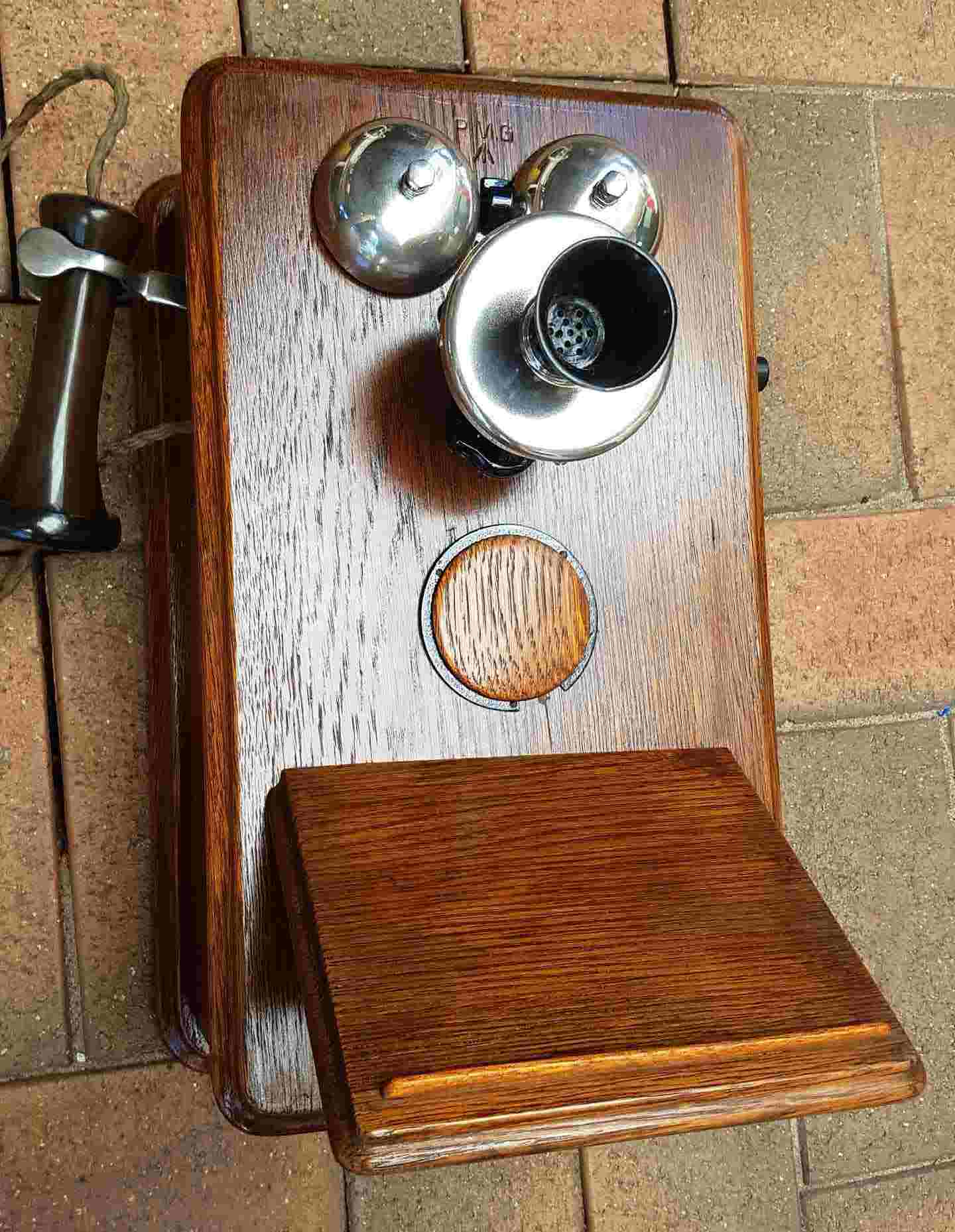
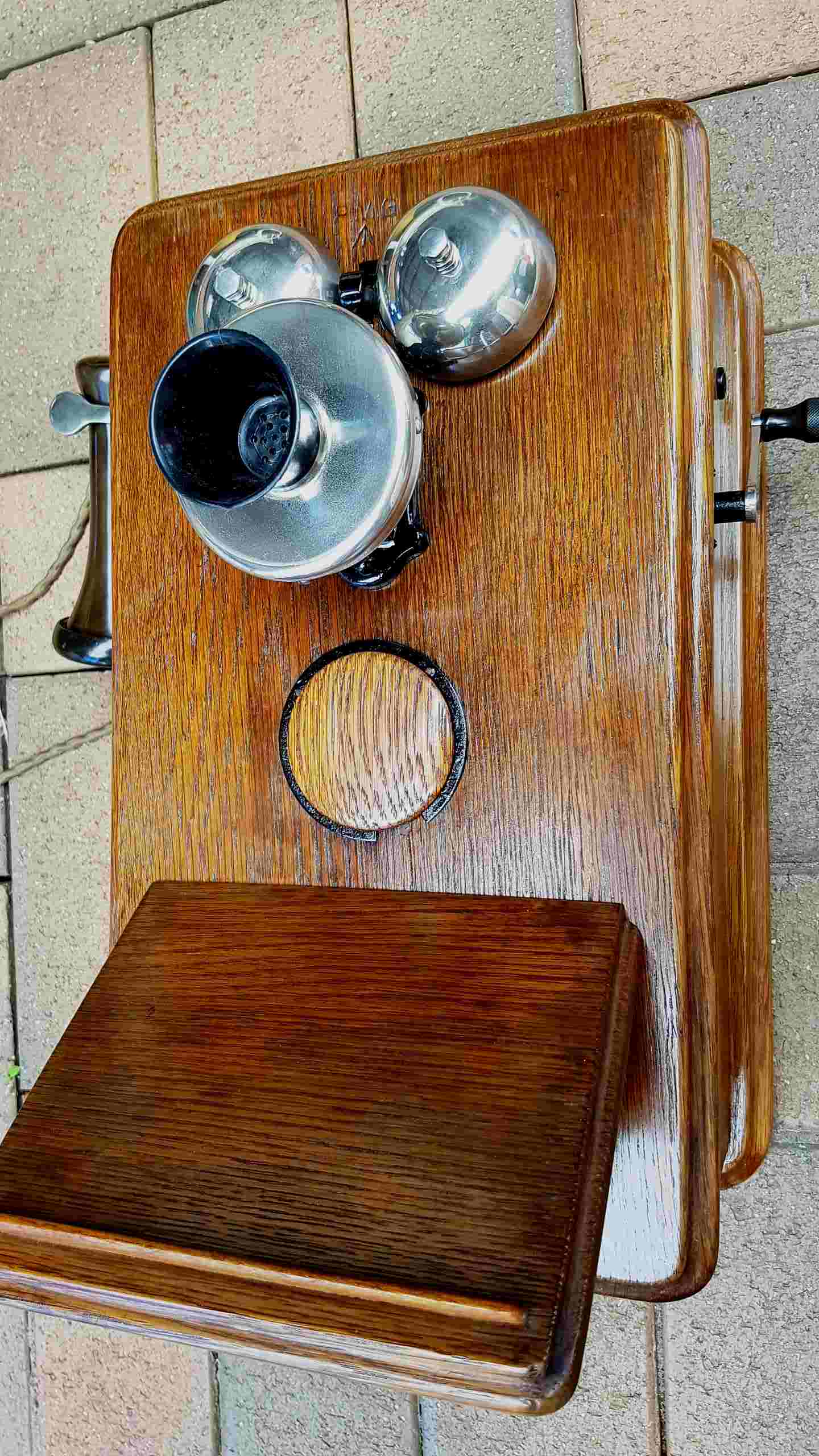
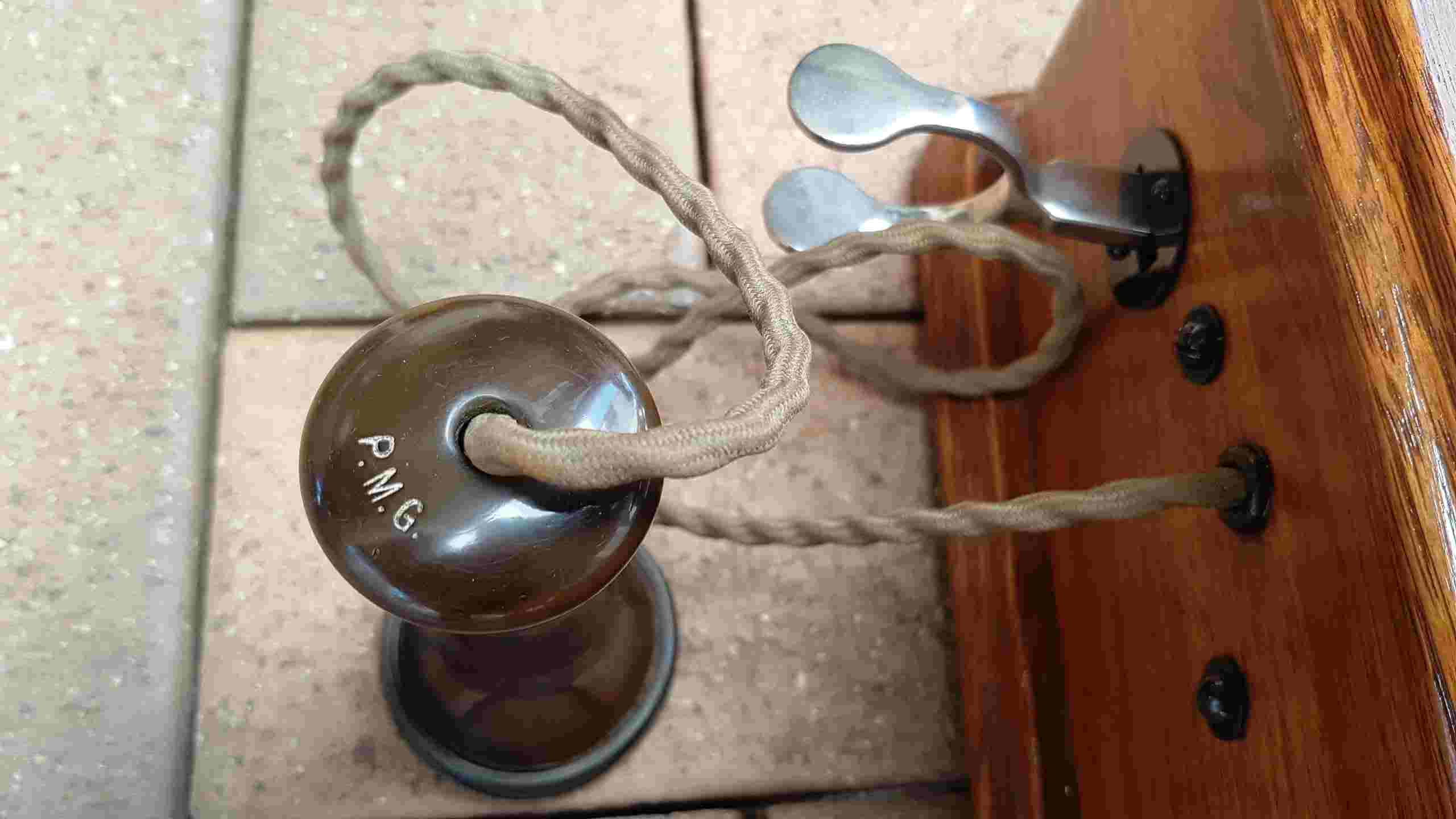
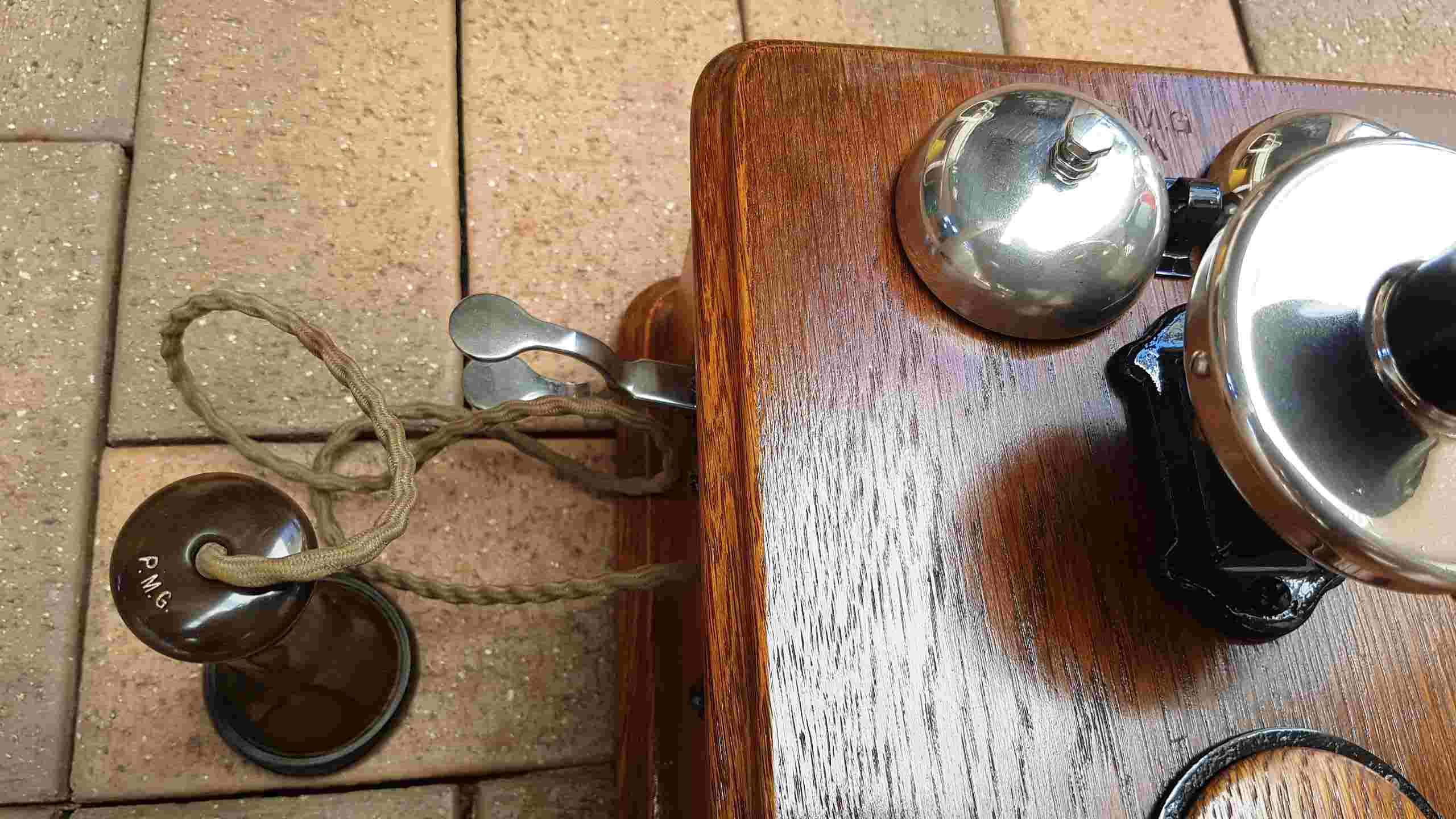
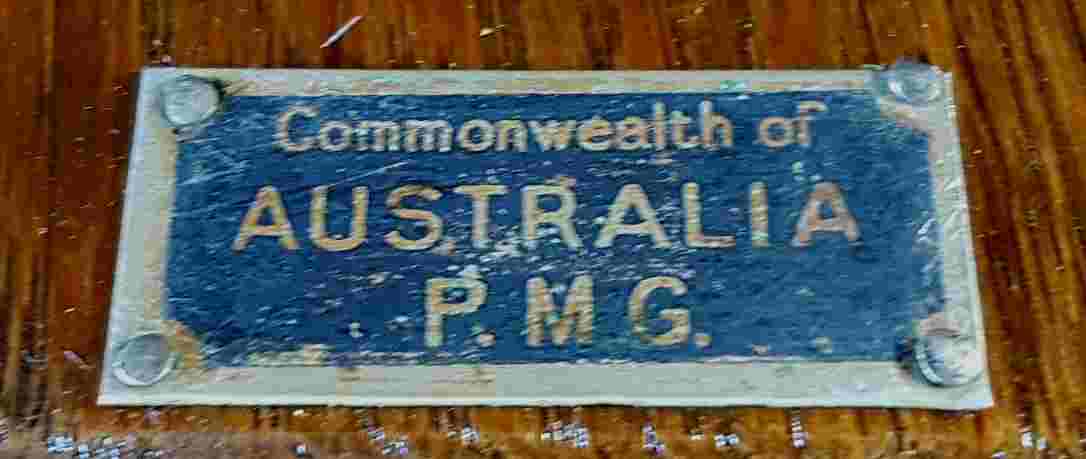
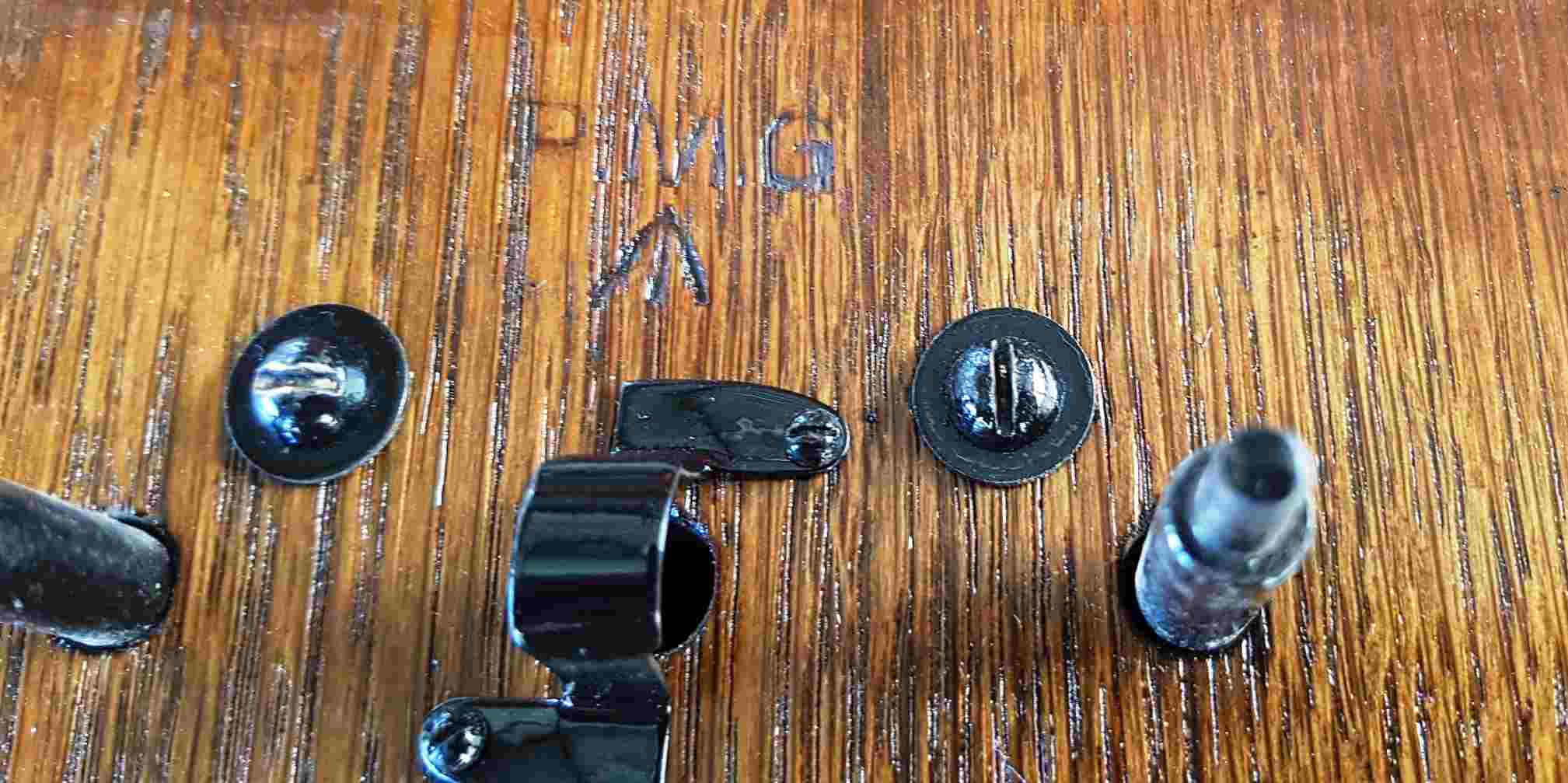
Common Battery or Auto dial wall telephone set.
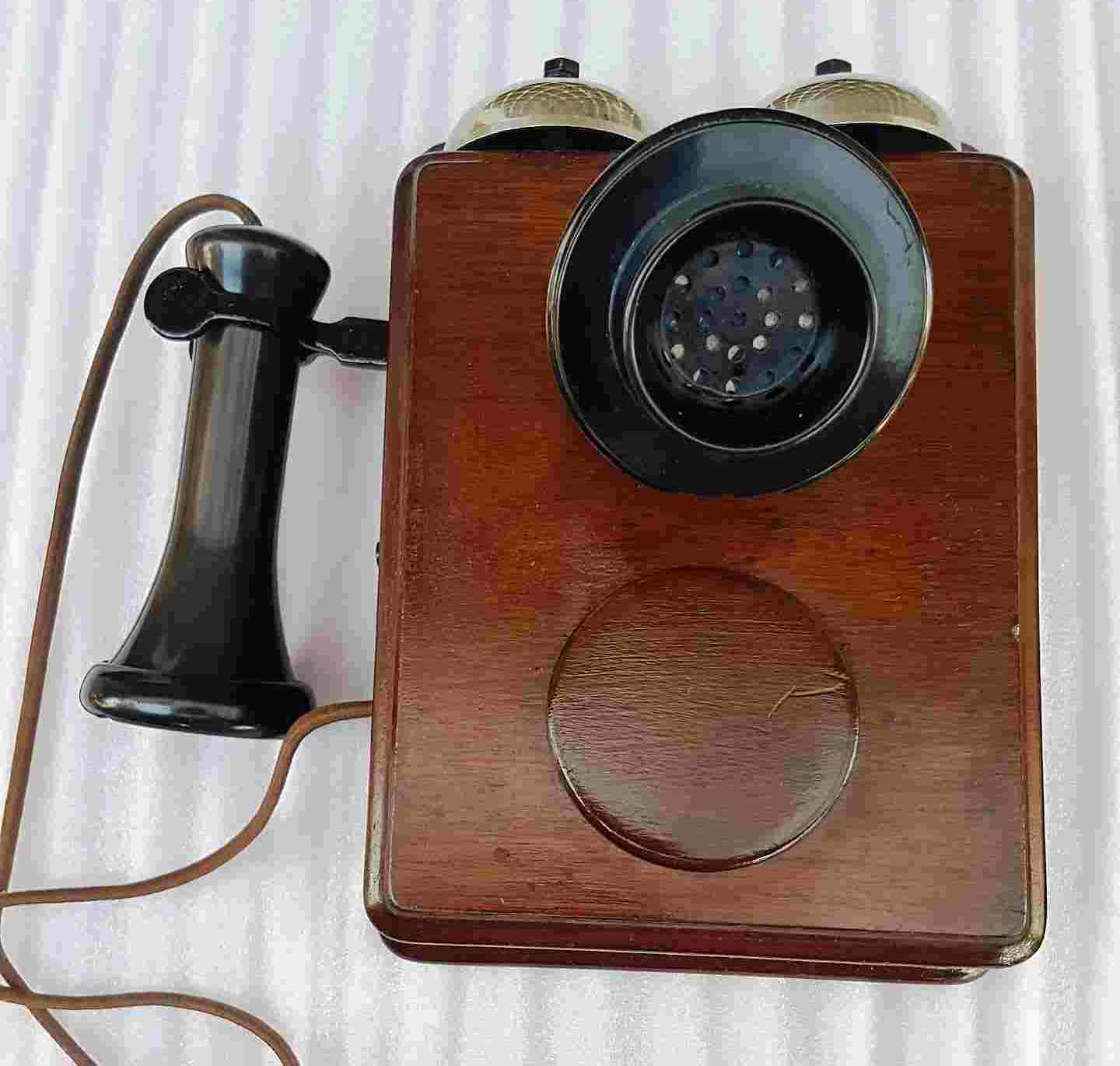
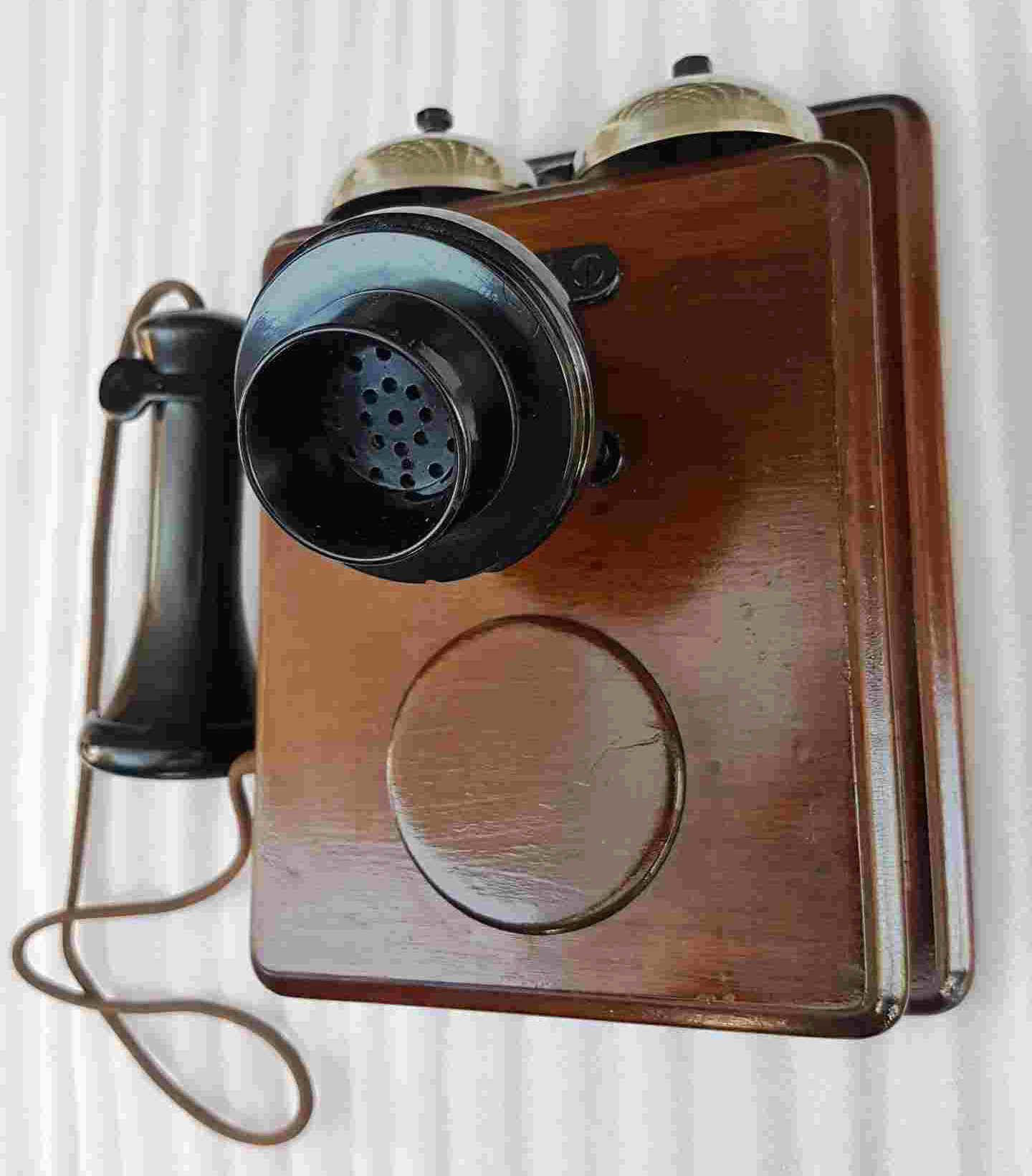
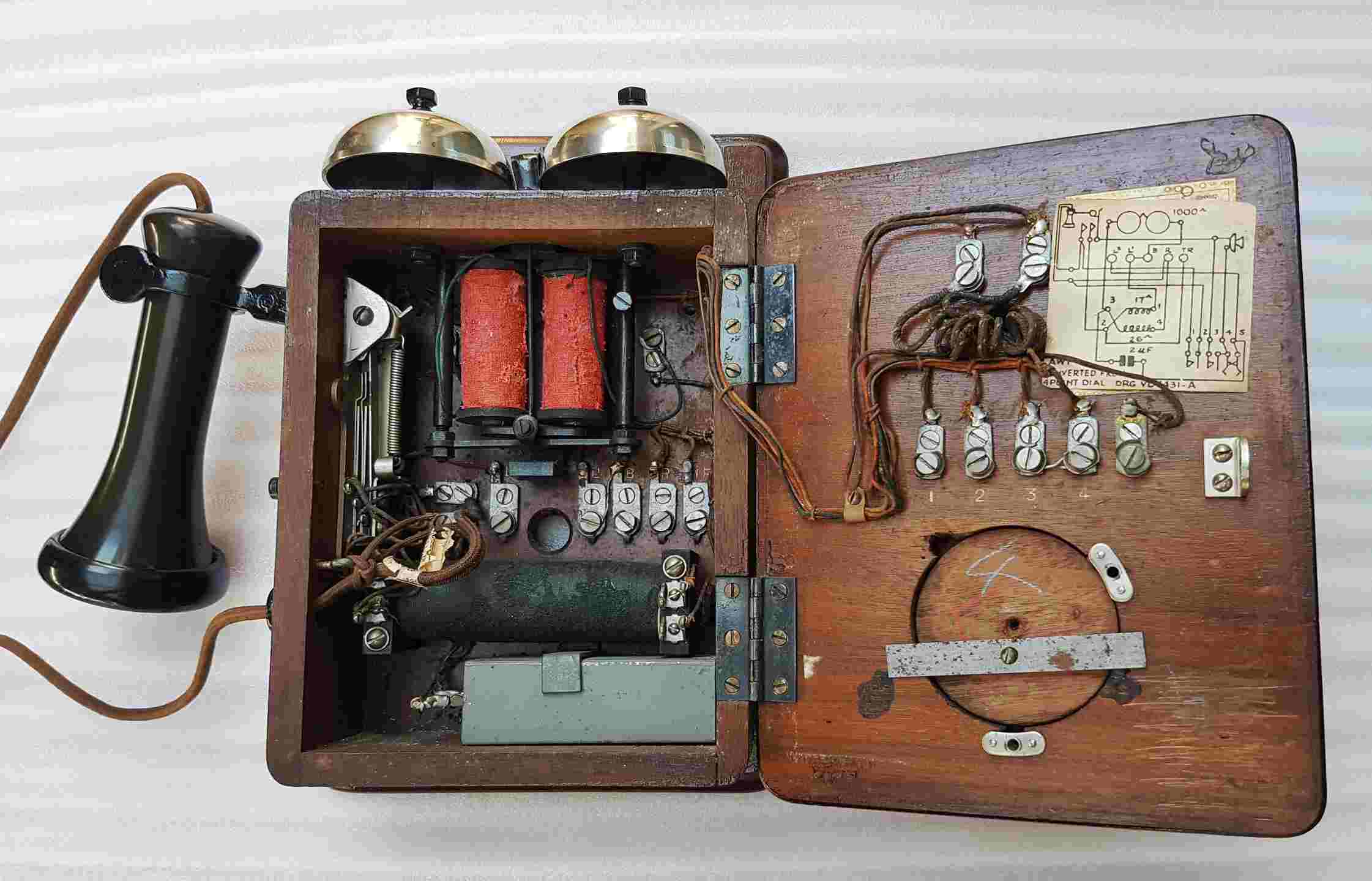
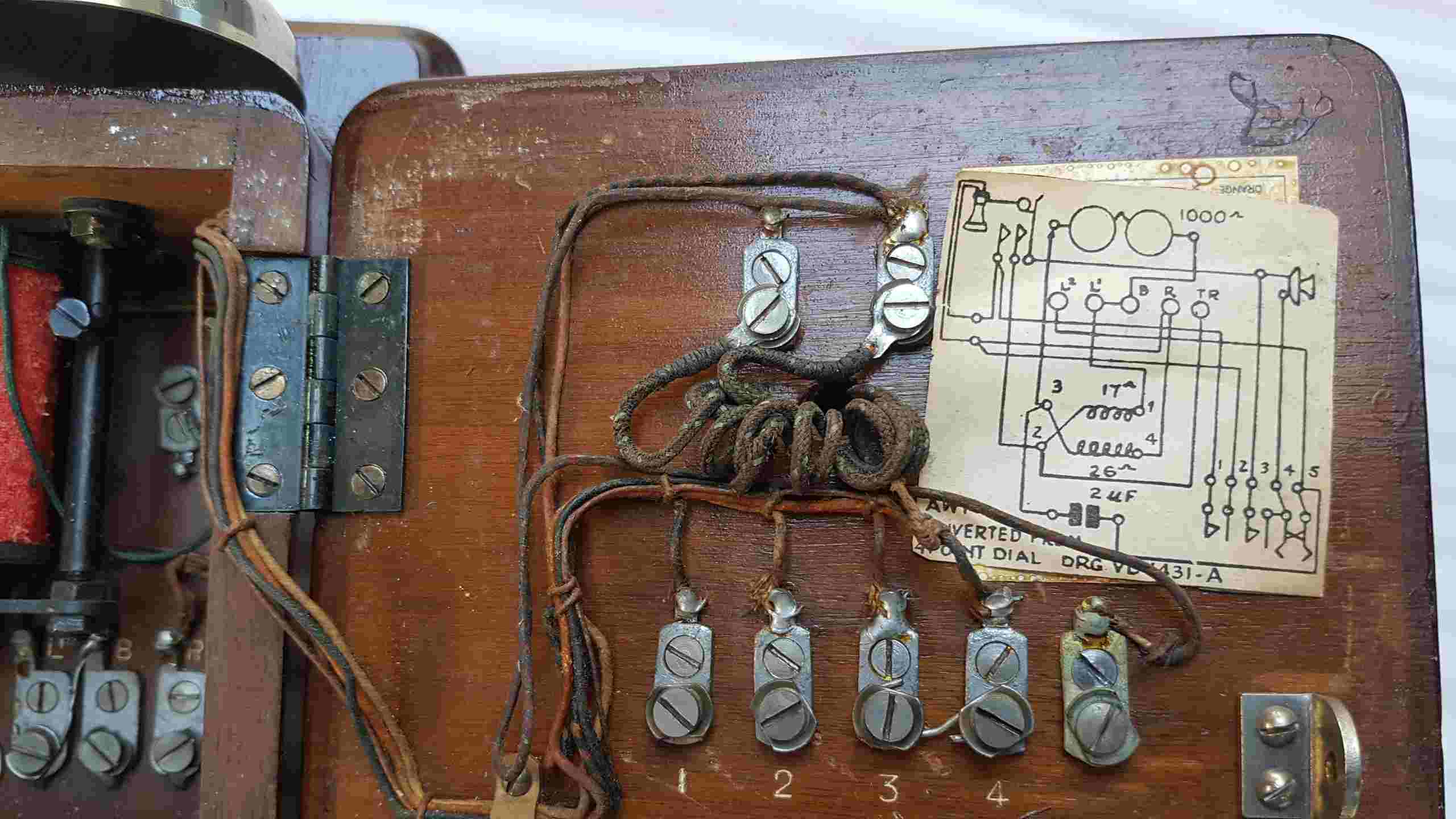
PMG Peel Connor CB wall phone
Extremely rare - there will be others in Australian collections or museums, but I don't know of any.
The telephone industry changed after World War 1. Magneto exchanges were being dropped in favour of the more efficient CB exchanges. Increasingly, automatic exchanges were being introduced, something Peel-Conner had not developed into, but they did manufacture this example for the CB exchanges.
A most rare wall phone in a lovely mahogany timber. It is complete and with the correct receiver and transmitter and horn. All original including the internal components and "Blueprint" circuit diagram. The original Nickel plating is in exceptional condition.
This type of phone was used in the 1920/1930s era and would have been connected to Central Battery exchanges that were used before the telephone network was changed to Auto Dial. The exchange operator was signalled by lifting the receiver; no magneto handle to turn.
This meant that the technology was only suited to cities where the telephone was relatively close to the telephone exchange.

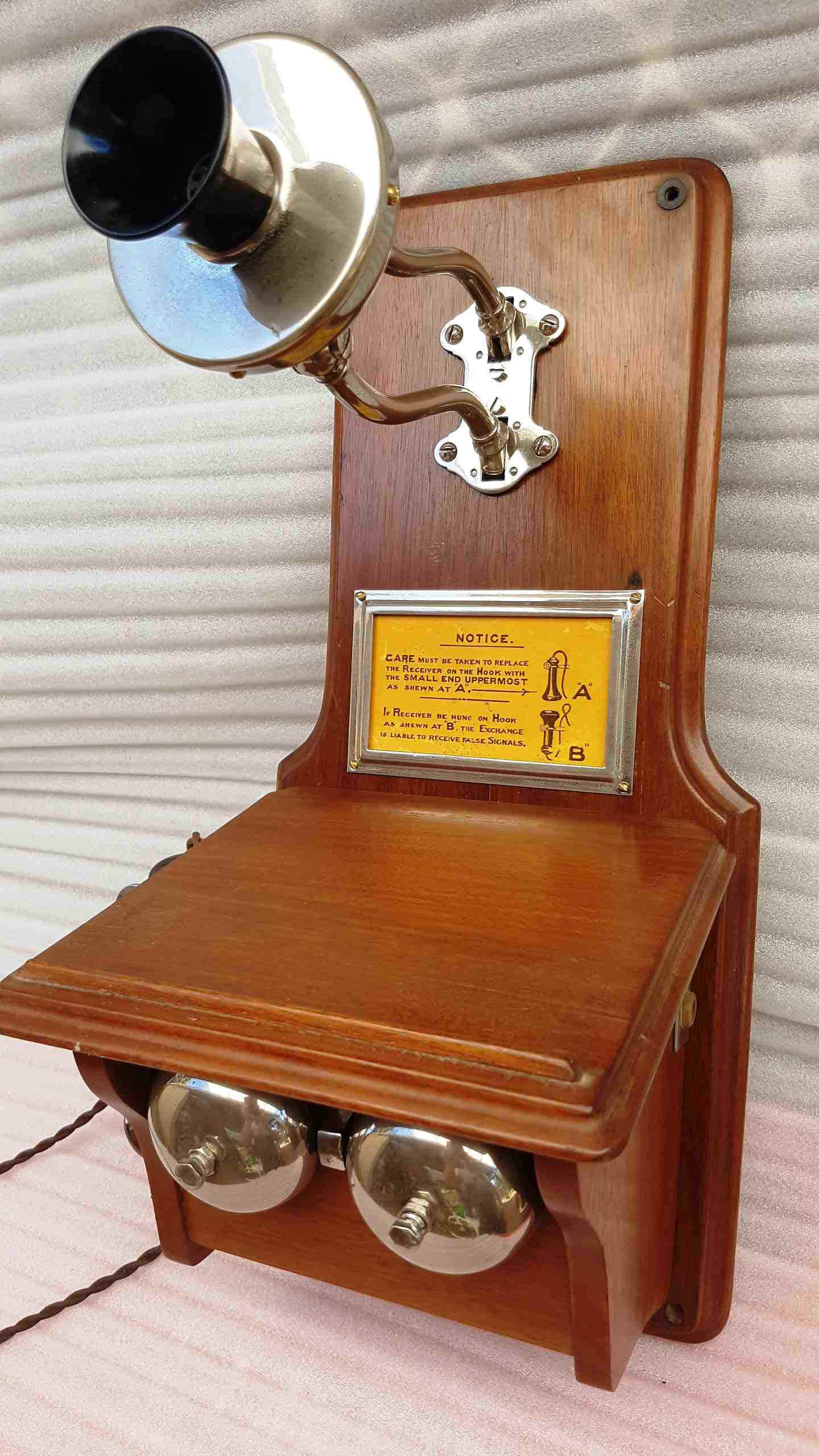
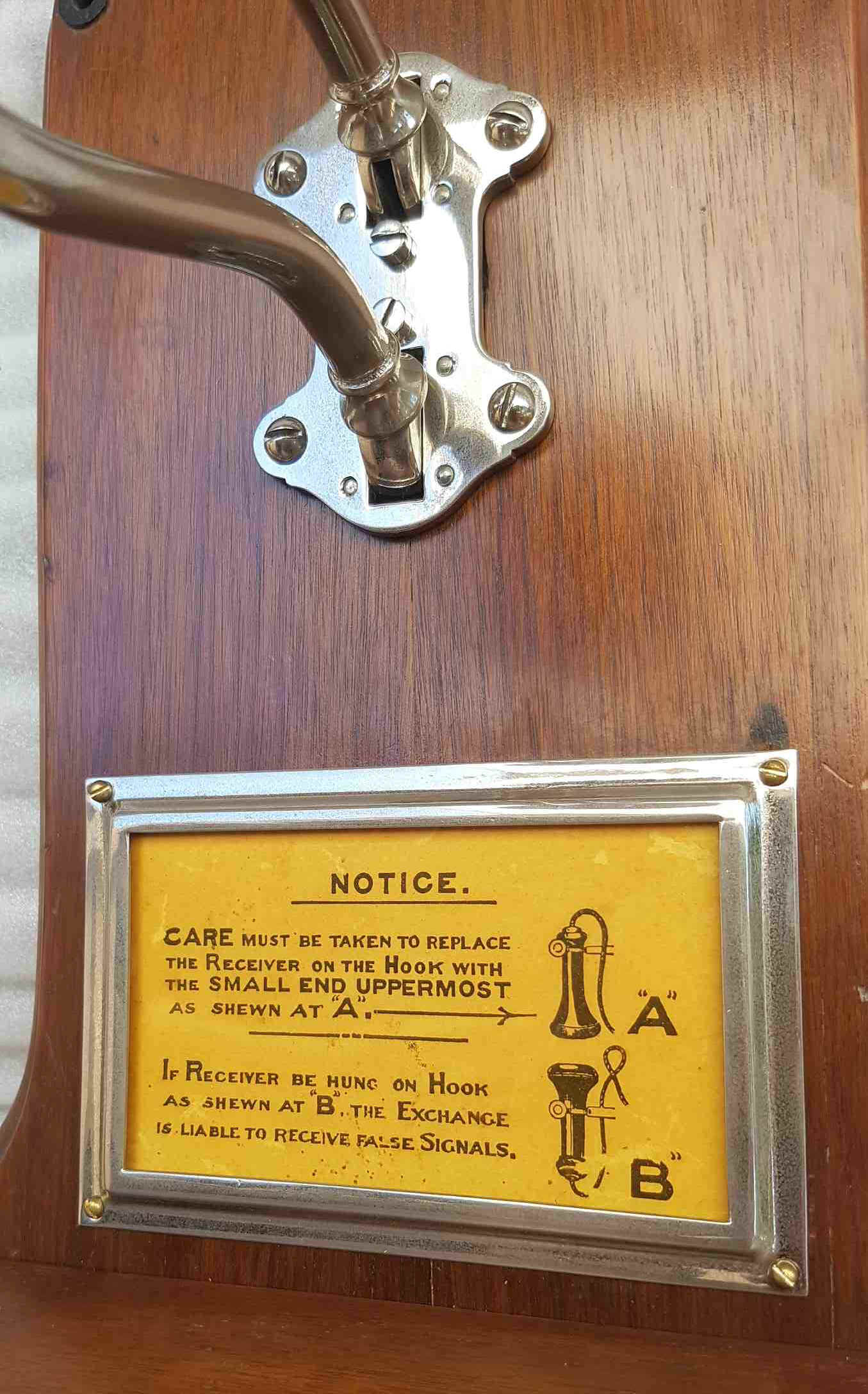
.jpg)
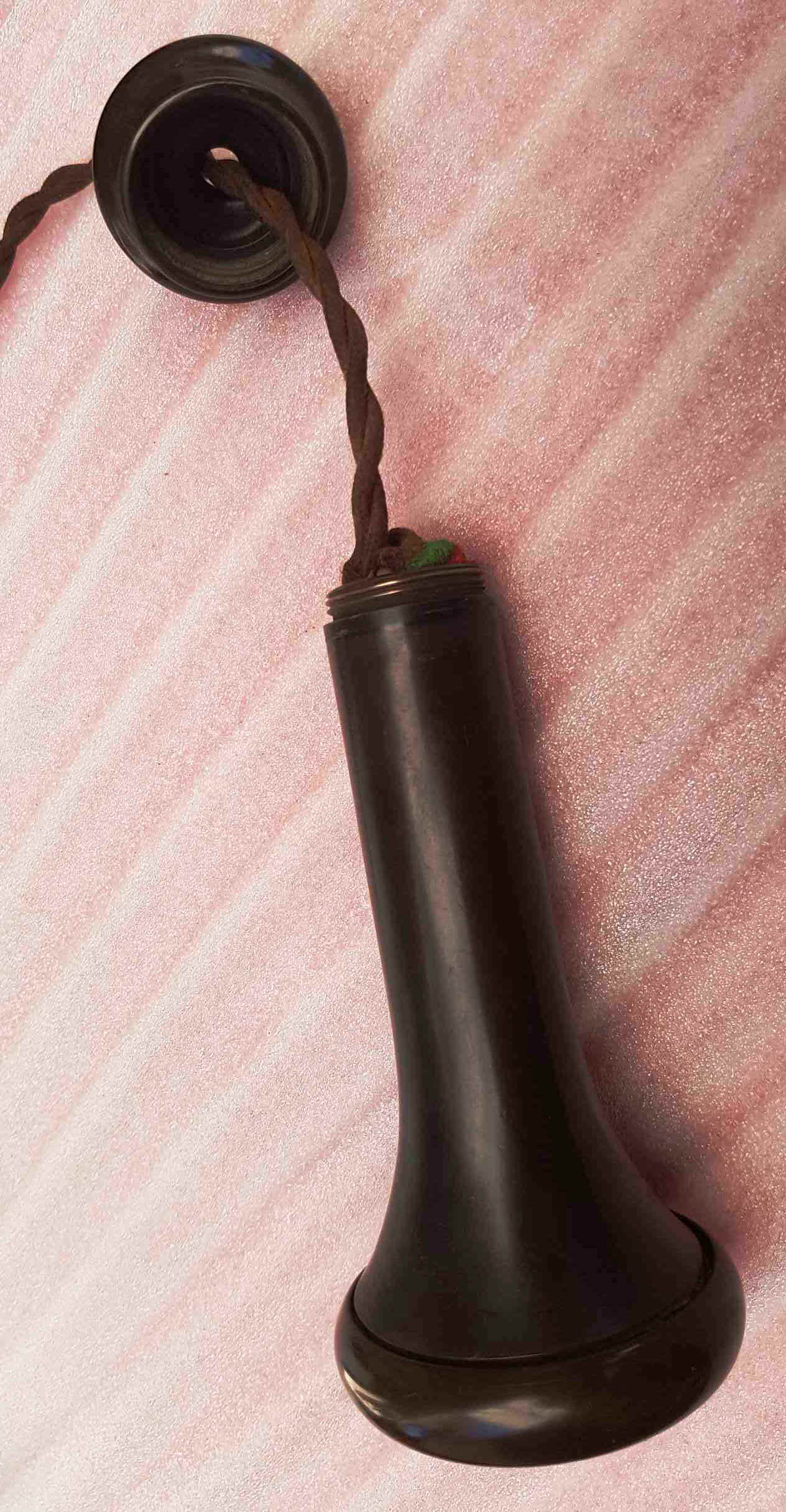
Very rare with the double arm mounted transmitter
Old Blueprint style circuit diagram
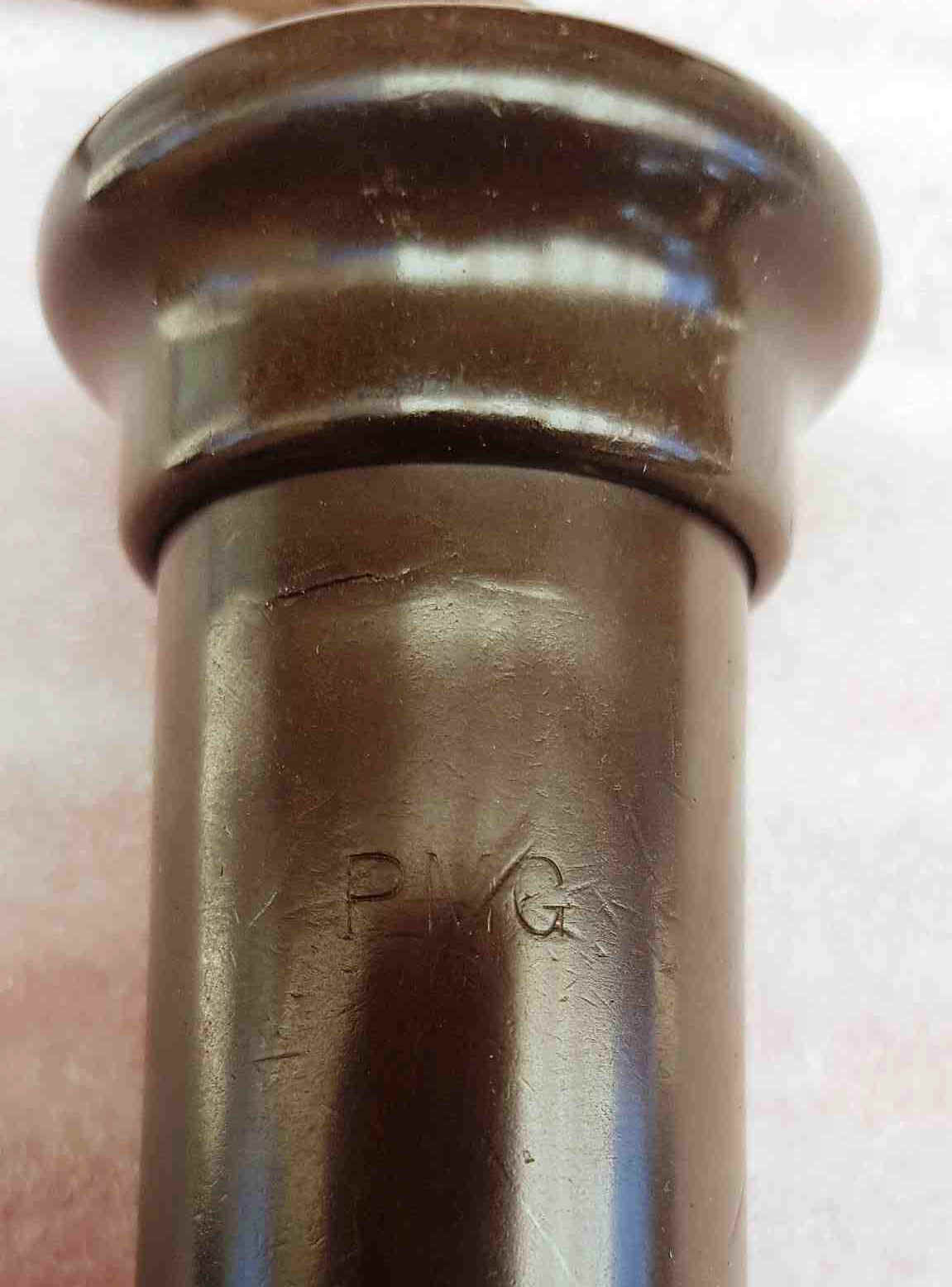
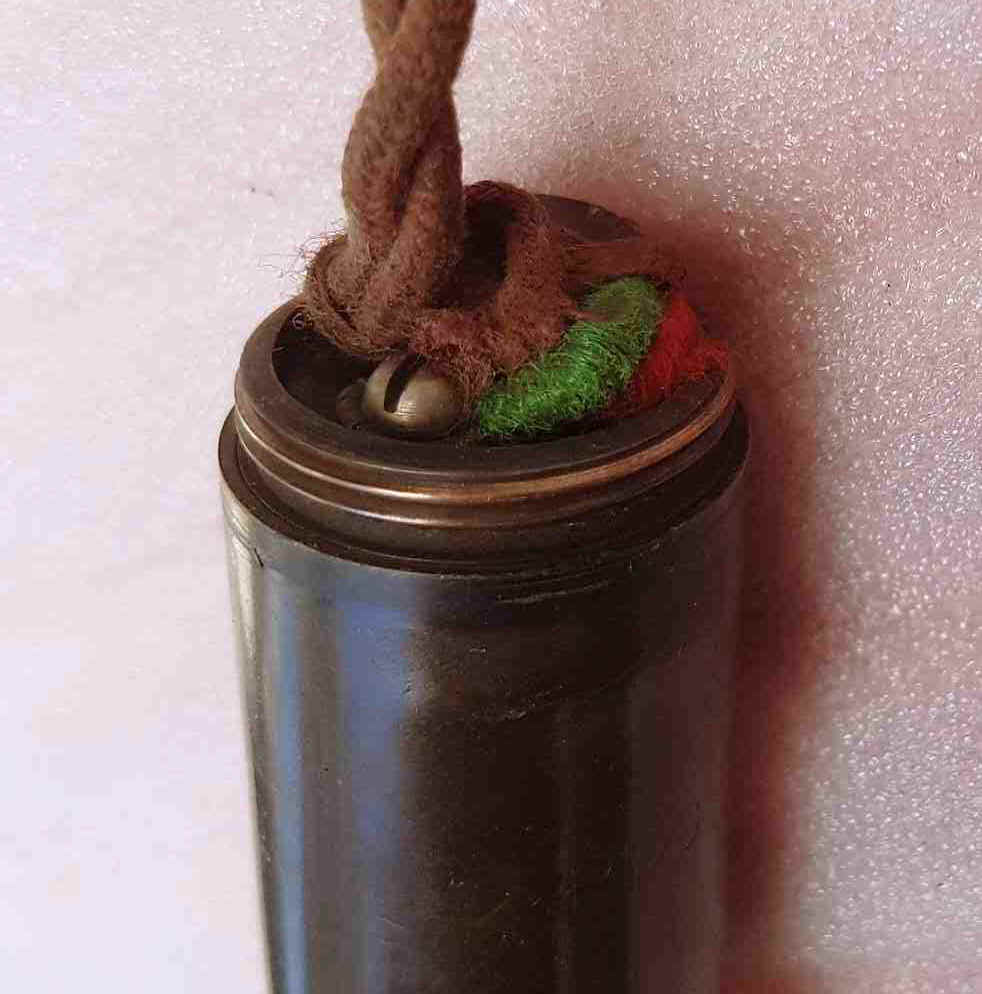
Old (archaic) English spelling "SHEWN"
Very rare genuine Peel Connor earpiece also stamped "PMG"

Peel Connor telephone factory (UK) taken over by GEC
Western Electric CB wall phone
A rare addition to this Western Electric 312A telephone is what is often called the Phonopore Howler. I have a number of these with other Western Electric telephones in my collection and I have never bought one for less than $200. I have one available for $200 as an added feature for this rare telephone. The howler was typically wall mounted, directly above the 312A. This same sounder was also often used with the Phonpore telephone used by railways - It was needed to signal a voice call without interfering with the Morse. This ruled out magneto bells, as their pulses were in the same frequency range as the Morse.
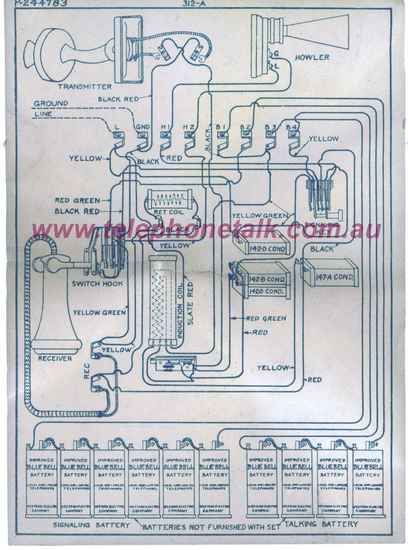
Stromberg Carlson CB wall phone. SC1130BY
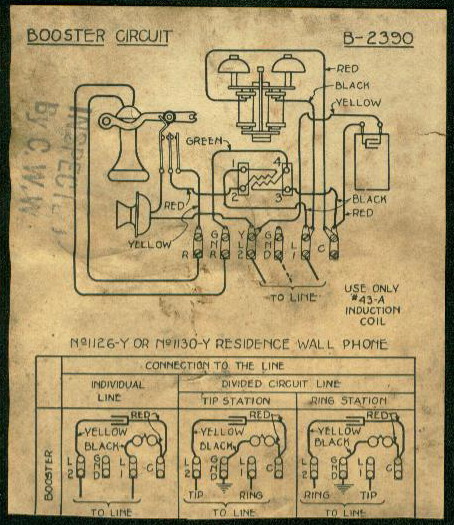
SC1130BYcircuit
Kellogg CB wall phone.
Exceptional PMG wall telephones,
Type 37. Both phones are complete -
One is an AW (Auto-dial Wall telephone) with an early No8 slipping cam dial.
and the other is a CBW (Common Battery Wall telephone) with the wooden plug in the front where a dial could be added at a later date if required.
Note - the pale semi-circular mark on the right hand pic of each phone is flash reflection from the Nickel plated mouthpiece.
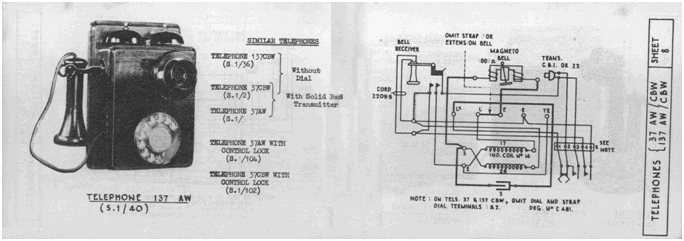
CBW - Sold
British Ericsson type n2516
1901-1907
Kellogg Magneto Wall Phone SOLD
in exceptional original condition. American Oak case has been repolished,
original Kellogg art work still retained on the writing slope, all original
internal silk/cotton covered wiring
Kellogg catalogue information
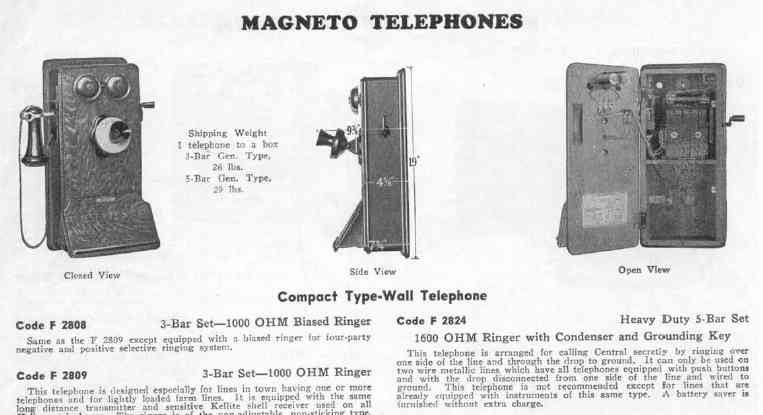
The Strowger Automatic Electric telephone from 1910-20's
c1920 Automatic Electric (Geelong) dial telephone. Patent May 1906. Strowger (Mercedes) dial operates correctly. With the correct receiver module and the early "A" moulded earpiece
In 1912 Australia's first automatic telephone exchange was installed at Geelong. Victoria; approximately 70km South-West of the State Capital, Melbourne The exchange equipment was Strowger Automatic telephone apparatus, manufactured by the Automatic Electric Company, Chicago USA. In association with the exchange installation, large quantities of small wall mounted (and candlestick) telephones were also imported. They were known officially as the PMG Type 35, but also known colloquially as the Geelong.
These phones for the PMG were made from timber and painted black. They were of cheap construction compared to other telephones of the era, and their electrical circuit was very simple.
One of the most easily recognised features is the "Mercedes" dial.
Notice that there is no induction coil in the phone, and the receiver does not contain permanent magnets. The phone circuit is extremely simple, with the transmitter and receiver connected in series.
Just one "off-normal" spring set on the dial which places a short circuit across both the transmitter and receiver.

